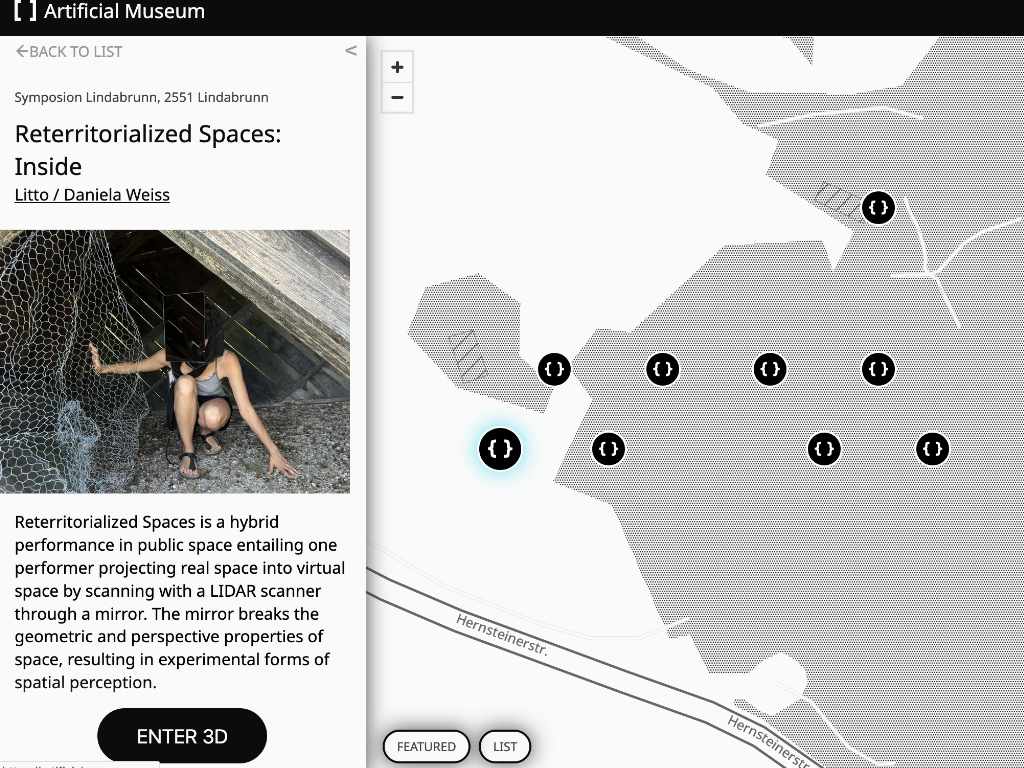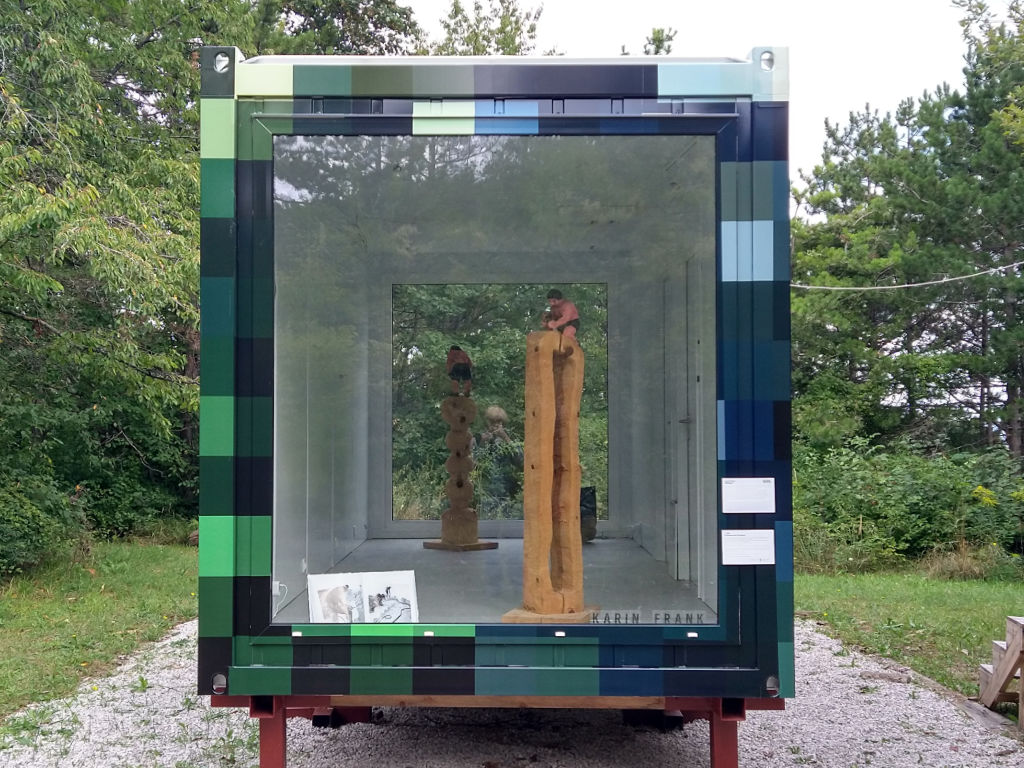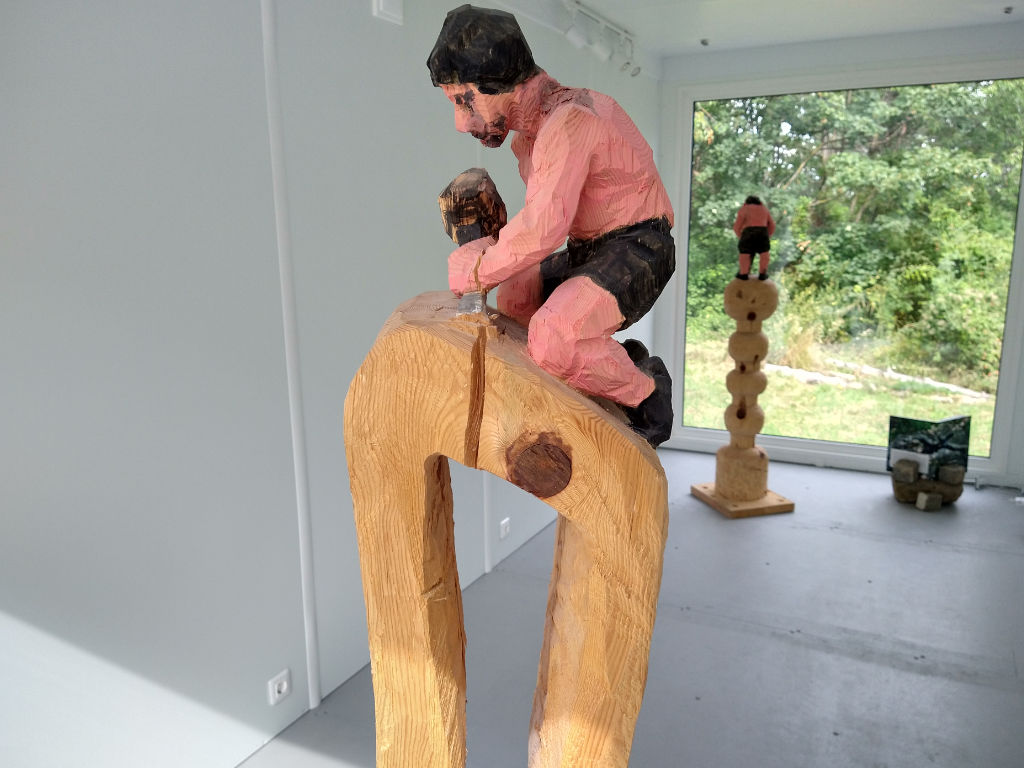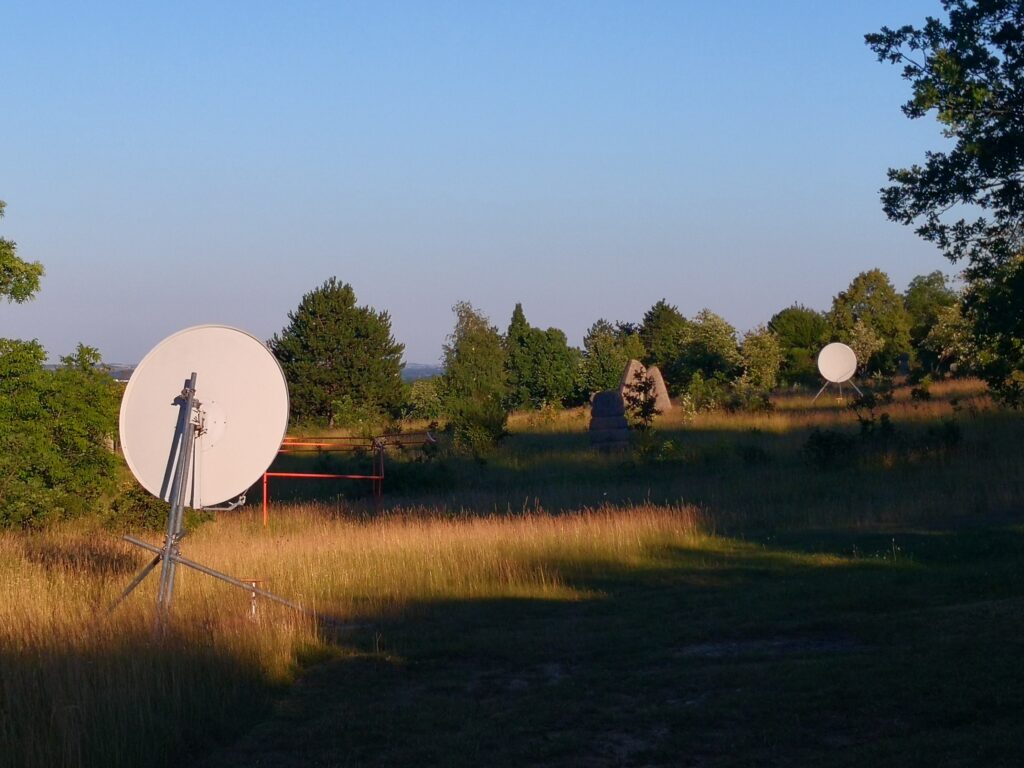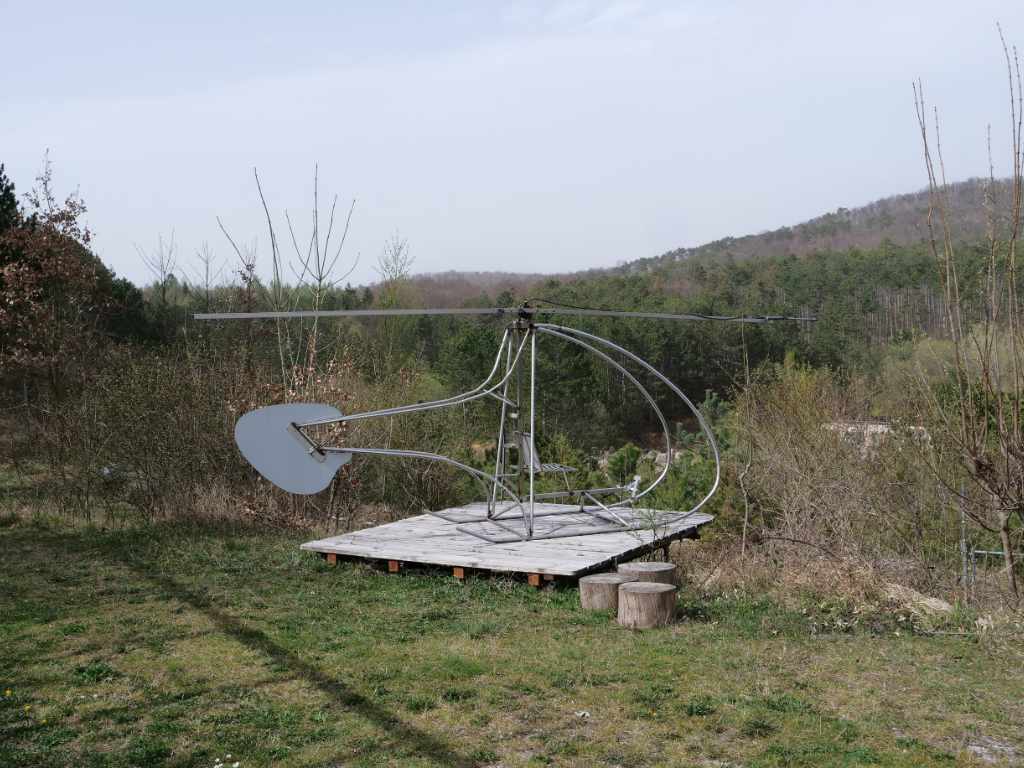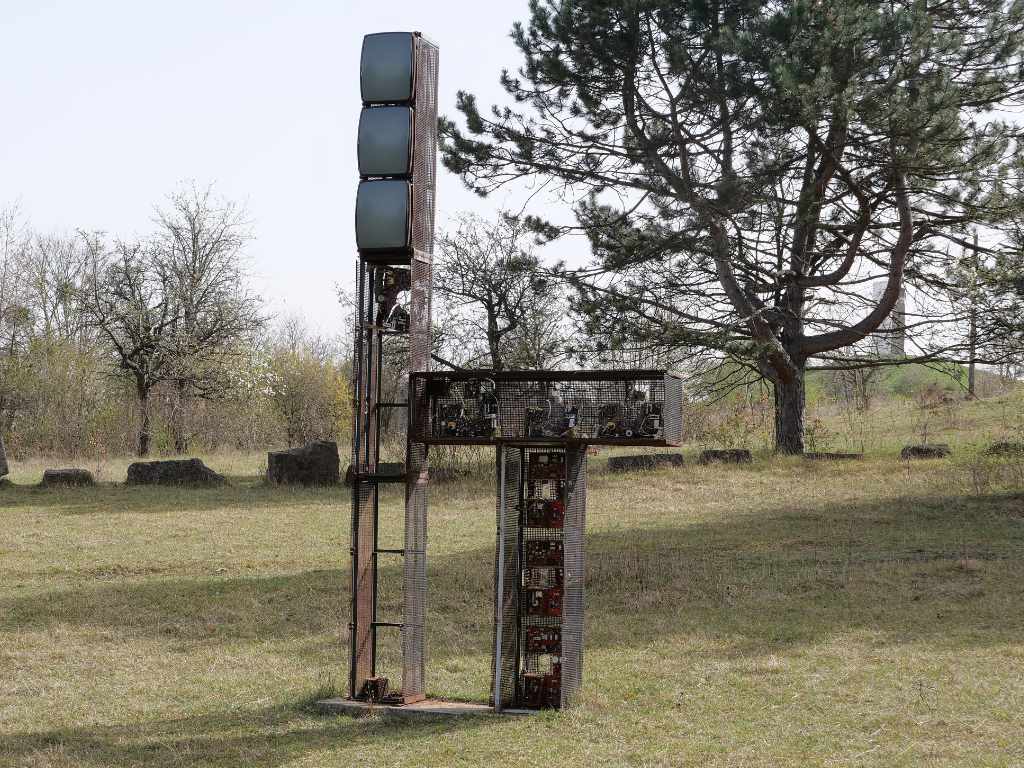Artificial Museum am Symposion Lindabrunn
Künstler*innen: Ferdinand Doblhammer, Hideo SNES, Jascha Ehrenreich, Litto, Madi Piller, Manuel Cyrill Bachinger, Victoria Coeln
Virtual Sculpture – Webbased AR – Music Performances – Outdoor & Indoor Exhibition – Workshop – Panel – Keynote Speech – Mirror Mechanisms – Cyborg – Extended Cinema
Das Artificial Museum ein Museum für digitale Kunst im öffentlichen Raum. Die Ausstellungsplattform wurde von Daniela Weiss und Jascha Ehrenreich initiiert und entwickelt. Für das Symposion “Reterritorialized Spaces” luden sie Künstler*innen und Kollektive dazu ein, ortsspezifisch und prozessual Skulpturen, experimentelle Performances und musikalische Interventionen mit neuesten Technologien zu entwickeln. Was dabei entstand, ist an diesem Wochenende hautnah mit den Künstler*innen zu erleben. Sie sind bis heute noch am Gelände ortspezifisch zu sehen :
Arbeiten des Artificial Museum am Symposion Lindabrunn
„Bewegung schafft Raum. Wahrnehmung entsteht aus Bewegung. Das Unsichtbare erschließt sich erst in der Bewegung“.

